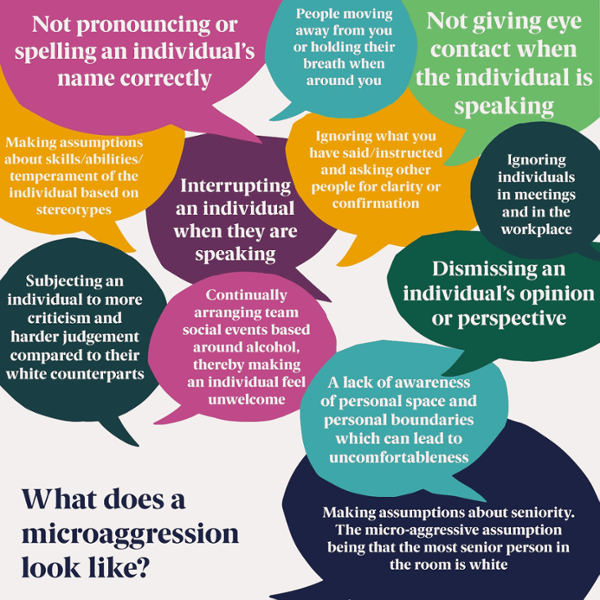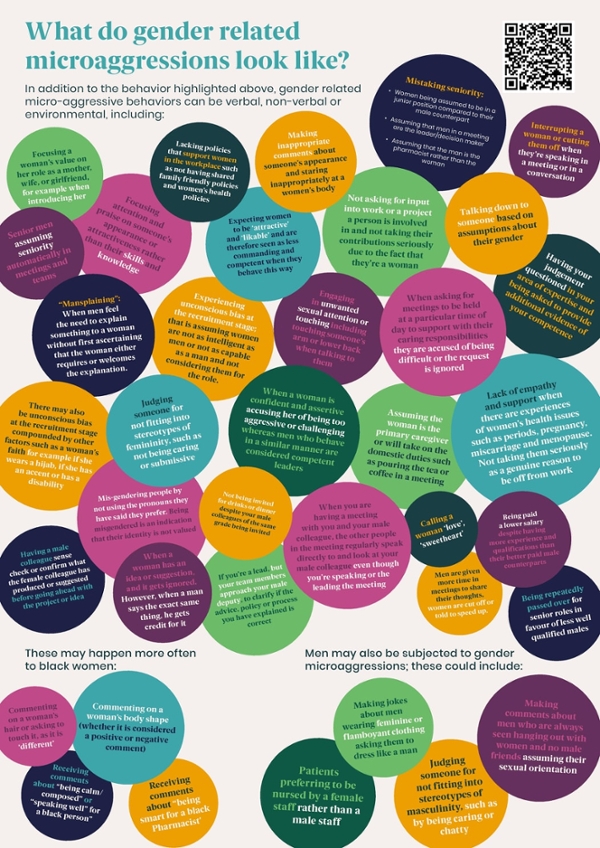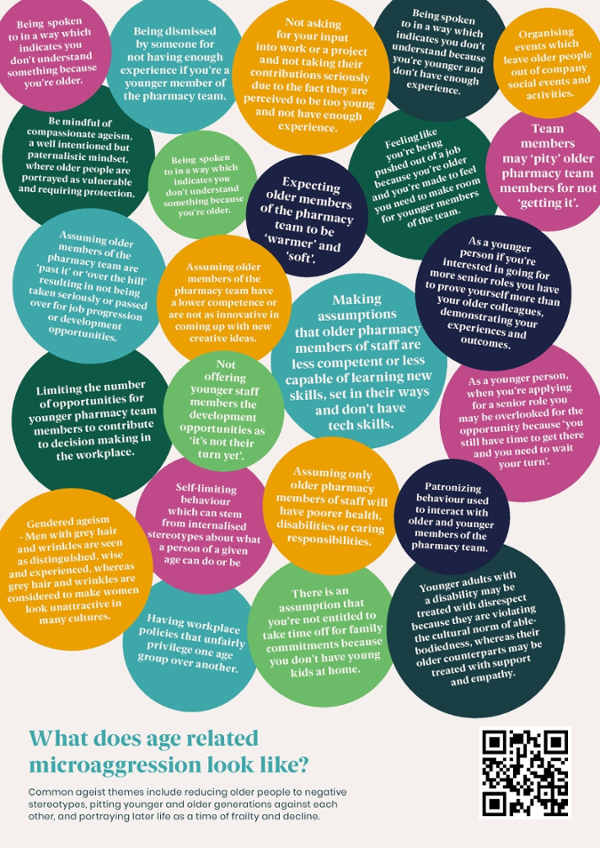Microaggressions
Microaggressions
Microaggressions are “the brief and commonplace daily verbal, behavioural, and environmental indignities, whether intentional or unintentional, that communicate hostile, derogatory, or negative racial, gender, sexual orientation, and religious slights and insults to the target person or group” (Sue, 2010, p. 229). Many individuals and communities face microaggressions daily. Because microaggressions are common and because they occur in the context of systemic oppression, exposure to them can cause serious harm to people’s health and well-being.
AWES. (2021, July 30). Microaggressions in the Workplace [YouTube Video]. Retrieved from https://youtu.be/e7slPzAL2YE?si=FbJYXzBkzOCoDSfG
What is a Microaggression?
Different Forms of Microaggressions
To be clear, the "micro" in microaggression doesn't mean that these acts can't have big, life-changing impacts. They can, which is all the more reason to address them when you see them. If you can, that is. - Limbong, 2020
The Importance Of Addressing Microaggressions In Conversations
Learn More
The Micropedia of Microaggressions: A resource by Micropedia that provides the first encyclopedia of microaggressions, with examples of what microaggressions and harmful language look like towards different equity-denied group.
Expand Your Understanding Through Western EDI’s Comprehensive Module:
Sources:
Sue, D. W., Capodilupo, C. M., Torino, G. C., Bucceri, J. M., Holder, A. M. B., Nadal, K. L., & Esquilin, M. (2007). Racial microaggressions in everyday life: Implications for clinical practice. American Psychologist, 62(4), 271–286. https://doi.org/10.1037/0003-066X.62.4.271
Psychology Today. (2010, November 17). Microaggressions: More Than Just Race. Retrieved from https://www.psychologytoday.com/gb/blog/microaggressions-in-everyday-life/201011/microaggressions-more-just-race
Royal Pharmaceutical Society. (2023). Microaggressions. Retrieved from https://www.rpharms.com/recognition/inclusion-diversity/microaggressions
Varia, S. (2023, February 14). The Pharmaceutical Journal. Addressing microaggressions to deliver cultural competence in pharmacy. Retrieved from https://pharmaceutical-journal.com/article/ld/addressing-microaggressions-to-deliver-cultural-competence-in-pharmacy
University of Minnesota School of Public Health: Health Equity Work Group. (n.d.). Racial Microaggressions Table (PDF) - Examples of Racial Microaggressions. Retrieved from https://sph.umn.edu/site/docs/hewg/microaggressions.pdf
Nadal, K. L. (2014). A guide to responding to microaggressions. In CUNY Forum (Vol. 2, No. 1, pp. 71-76). https://ncwwi-dms.org/resourcemenu/resource-library/inclusivity-racial-equity/cultural-responsiveness/1532-a-guide-to-responding-to-microaggressions/file
NPR Life Kit. (2020, June 9). Microaggressions are a big deal: How to talk them out and when to walk away. Author: Andrew Limbong. Retrieved from https://www.npr.org/2020/06/08/872371063/microaggressions-are-a-big-deal-how-to-talk-them-out-and-when-to-walk-away
The New York Times. (2019, October 31). A Gender Divide on Microaggressions in Medicine. Retrieved from https://www.nytimes.com/2019/10/31/well/live/a-gender-divide-on-microaggressions-in-medicine.html













